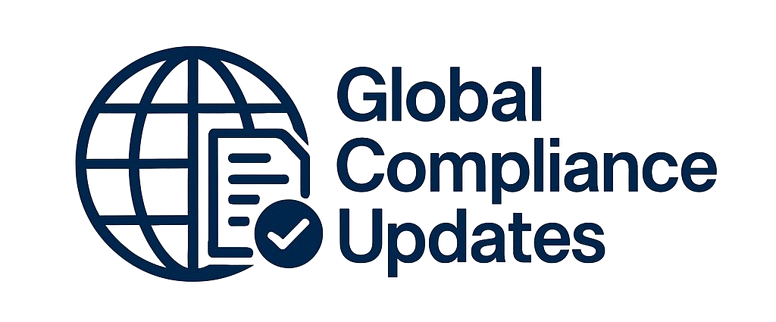This training program will examine how human factors/usability is the analysis of how people interact with medical devices. The process of conducting rigorous human factors studies throughout the design process, integrating it with the device risk analysis and design process, and validating the effectiveness of the studies will be explained. The various types and methods of human factors analysis will be explained. This process conforms to the new ISO 62366 standard and the new FDA guidance document.
WHY SHOULD YOU ATTEND?
The FDA will only approve devices designed so that it is practically impossible for people to accidentally harm themselves even if they use the device improperly. The FDA has replaced the term “user error” with “user error,” which means that it’s how the product is used and not a human error that is considered by the FDA to be a device nonconformity. As a result, human factors should be considered in the design process, and the burden is now on the device designer to create an “idiot-proof” product.
Human Factors Usability Testing is the analysis of how people interact with medical devices. This session will explain the process of conducting rigorous human factors studies throughout the design process, integrating it with the device risk analysis and design process, and validating the effectiveness of the studies. The various types and methods of human factors analysis will also be explained. This process conforms to the new ISO 62366 standard and the new FDA Guidance document.
AREA COVERED
- The need for understanding and optimizing how people use and interact with technology
- Definitions: Use scenario, task, critical task
- Latest FDA Guidance on applying human factors and usability engineering to medical devices
- Usability plan
- Use specification
- Usability hazard analysis
- Use-related hazards
- User interface specification
- User interface evaluation plan
- Preliminary analysis and evaluations
- Evaluation methods
- Analytical methods
- Empirical methods
- Verification and validation
- Human factors report
LEARNING OBJECTIVES
- User error versus use error
- Use related hazards and risk analysis
- User profiles
- Use scenarios
- Step-by-step human factors program development
- Validation
- Use specification template
- User interface evaluation template
- Usability validation control matrix form
WHO WILL BENEFIT?
- Development Engineers
- Production Management
- QA/QC Personnel
- Software Developers
- Usability engineers
- Risk managers
- Design Engineering Managers
- Engineer
- Engineer Management
- Quality assurance
- Regulatory Professionals
The FDA will only approve devices designed so that it is practically impossible for people to accidentally harm themselves even if they use the device improperly. The FDA has replaced the term “user error” with “user error,” which means that it’s how the product is used and not a human error that is considered by the FDA to be a device nonconformity. As a result, human factors should be considered in the design process, and the burden is now on the device designer to create an “idiot-proof” product.
Human Factors Usability Testing is the analysis of how people interact with medical devices. This session will explain the process of conducting rigorous human factors studies throughout the design process, integrating it with the device risk analysis and design process, and validating the effectiveness of the studies. The various types and methods of human factors analysis will also be explained. This process conforms to the new ISO 62366 standard and the new FDA Guidance document.
- The need for understanding and optimizing how people use and interact with technology
- Definitions: Use scenario, task, critical task
- Latest FDA Guidance on applying human factors and usability engineering to medical devices
- Usability plan
- Use specification
- Usability hazard analysis
- Use-related hazards
- User interface specification
- User interface evaluation plan
- Preliminary analysis and evaluations
- Evaluation methods
- Analytical methods
- Empirical methods
- Verification and validation
- Human factors report
- User error versus use error
- Use related hazards and risk analysis
- User profiles
- Use scenarios
- Step-by-step human factors program development
- Validation
- Use specification template
- User interface evaluation template
- Usability validation control matrix form
- Development Engineers
- Production Management
- QA/QC Personnel
- Software Developers
- Usability engineers
- Risk managers
- Design Engineering Managers
- Engineer
- Engineer Management
- Quality assurance
- Regulatory Professionals
Speaker Profile
 Edwin Waldbusser
Edwin Waldbusser
Edwin Waldbusser, is a consultant retired from industry after 20 years in management of development of medical devices (5 patents). He has been consulting in the areas of design control, risk analysis and software validation for the past 8 years. Mr. Waldbusser has a BS in Mechanical Engineering and an MBA. He is a Lloyds of London certified ISO 9000 Lead Auditor and a member of the Thomson Reuters Expert Witness network.
Upcoming Webinars

ChatGPT and Project Management: Leveraging AI for Project M…

Workplace Investigations 101: How to Conduct your Investiga…

Project Management for administrative professionals

The Monte Carlo Simulations in Excel for Risky Investments

Onboarding is NOT Orientation - How to Improve the New Empl…

Dealing With Difficult People: At Work & In Life

Transform Data into Insights: A Beginners Guide to Excel Pi…

Construction Lending And Real Credit Administration: Evalua…

Understanding Accounting for non - Accounting professionals

Harassment, Bullying, Gossip, Confrontational and Disruptiv…

New Form 1099 Reporting Requirements: 2025 Compliance Update

Human Error Reduction Techniques for Floor Supervisors

HR Metrics and Analytics 2025 - Update on Strategic Plannin…

Treating Employees Like Adults: Discipline versus Empowerme…

7 Ways To Beat Burnout: Without Quitting Your Job


How to Write Procedures to Avoid Human Errors

Handbook Overhaul 2026: Compliance, OBBB Act & Beyond

FDA Proposes Framework to Advance Credibility of AI Models

Ethical Terminations: Navigating Employee Exits with Legal …

Understanding EBITDA – Definition, Formula & Calculation

Project Management for Non-Project Managers - Scheduling yo…

4-Hour Virtual Seminar on Hidden Secrets of Selling & Marke…

Validation Statistics for Non-Statisticians

Data Integrity and Privacy: Compliance with 21 CFR Part 11,…


The Alphabet Soup: When the FMLA, ADA, COBRA, and Workers' …

Talent Management: How to Leverage AI and ChatGPT Tools for…


Offboarding with Care: Conducting Legal & Ethical Employee …

2-Hour Virtual Seminar on How to Conduct an Internal Harass…

Payments Fraud Detect & Prevent Check, ACH and P-Card Schem…

Managing Toxic & Other Employees Who have Attitude Issues



Reduce Stress in the Workplace: Effective Ways to Handle Co…





Excel - Pivot Tables - The Key To Modern Data Analysis and …
